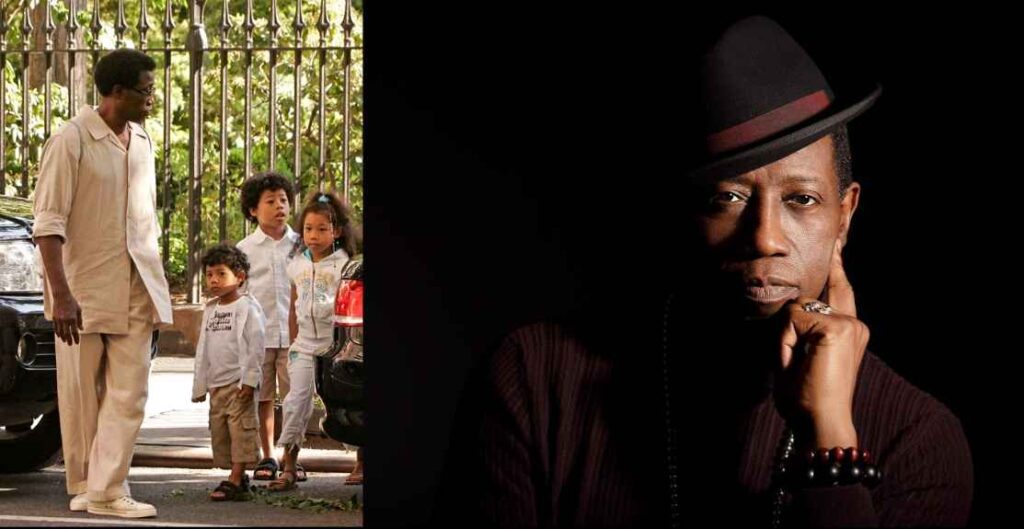If you have good taste in TV shows, you must have watched “Atlanta,” a black comedy-drama by the FX studio. It is a masterpiece of acting and storyline. In 4th season, one episode is about Thomas Ronald Washington, which leaves a lot of confusion in fans’ minds.
Like everyone, you also feel curious about the reality of Thomas Ronald Washington. One of the most common questions that bother everyone is whether it is a fictional character or a real person. So, let’s find out.
In this blog, you will get all your answers about Thomas Ronald Washington’s story and how it affected black people.
Table of Contents
Who Is Thomas Ronald Washington?

Thomas Ronald Washington, an animator with a passion for animation since his youth, became an unintentional CEO of The Walt Disney Company after the 1992 Los Angeles riots. Having studied at the Savannah College of Art and Design with dreams of working for Disney, he began as an assistant animator in DuckTales the Movie: Treasure of the Lost Lamp.
Due to a mix-up in names, the board appointed a white man named Tom Washington instead of Thomas after their temporary CEO’s death during the riots. Despite initial discontent, Thomas stayed in the role, introducing significant changes.
He questioned aspects like why Mickey Mouse would have Pluto as a pet if Goofy is also a dog. His vision for “the Blackest movie of all time” led to the project A Goofy Movie, featuring his son Maxwell as Max Goof.
Thomas faced personal challenges, becoming verbally abusive to his family. The Walt Disney Company grew concerned about his leadership, offering $75 million for contract termination, which he declined. In 1995, his car was found in a lake, the same lake where he went fishing with his son, but his body was never recovered.
Is Thomas Ronald Washington Real or Fictional?

Thomas Washington’s story is so heart-touching that people start to look for his family. However, it was a fictional character created by the writers of this episode, Francesca Sloane, Karen Joseph Adcock, Francesca and Donald Glover.
Eric Berryman played the role of Thomas Ronald, and he succeeded in portraying it perfectly. The dark truth about Disney is that they never appointed a black CEO. This story was only to misguide people, as many believed it to be true. But many other talented animators are black, so it is a mystery to me why Disney had to make a documentary on a fictional character.
Atlanta–The Goof Who Sat By The Door
In the eighth episode of Atlanta’s fourth season, titled “The Goof Who Sat By the Door,” the series takes a turn by deviating from its main characters. It was Aired on October 27, 2022. This episode was both written and directed by series creator and lead actor Donald Glover, marking a significant moment in the show’s evolution.
The story of Atlanta centered around Earnest “Earn” Marks and his involvement in Atlanta. But this episode introduces a fictional tale about Thomas Washington, a Black man appointed as the CEO of The Walt Disney Company. The episode unfolds with Washington’s ambitious vision to create what he deems “the Blackest movie of all time” – a project inspired by A Goofy Movie.
The episode cleverly references Sam Greenlee’s novel “The Spook Who Sat by the Door” and Robert Downey Sr.’s film “Putney Swope.” The storyline not only pays homage to these influential works but also explores themes of corporate dynamics.
Despite the absence of the main characters from the series, “The Goof Who Sat By the Door” received appreciation globally. Approximately 0.190 million households tuned in to watch, with a 0.06 ratings share among adults aged 18–49, according to Nielsen Media Research. Critics praised Glover’s multifaceted role in the episode, highlighting his skills in directing, cinematography, writing, and social commentary.
This departure from the series’ typical narrative showcases Atlanta’s willingness to experiment with storytelling. By blending fictional elements with real-world commentary, the episode captivates audiences with its innovative approach to television storytelling.
Were There Any Black Animators At Disney?
Absolutely, Disney has had Black animators on board. Over time, Disney recognized the need for diversity in its team. Though the numbers might have been limited before, there’s been a push for more representation. Talented Black animators have played a crucial role, bringing their creativity to various Disney projects and offering unique perspectives.
Disney is actively working towards creating an inclusive environment where artists from diverse backgrounds can shine and contribute to the enchantment of Disney animations. One of the examples is Floyd Norman. Back in 1956, he joined as Disney’s first Black animator, breaking down some serious barriers.
So, Norman kicks off with a gig in Sleeping Beauty, doing in-between work and helping out the legendary animator Frank Thomas with the fantastic fairies – Flora, Fauna, and Merryweather. Fast forward a bit, and he’s rocking it as an assistant animator on Mary Poppins. He also brought magic to The Jungle Book, animating the cool “Trust in Me” scene between Mowgli and Kaa with his animation.
After a short break, Norman makes a comeback in the ’70s, adding his touch to Robin Hood and being involved in animated TV programs. He even dabbled in scripting for the comic strip department.
And the story doesn’t end there! In more recent times, Norman left his mark on hits like Mulan and The Hunchback of Notre Dame. He’s not just Disney – Pixar got a taste of his genius, too, with contributions to Monsters, Inc. and Toy Story 2.
How Thomas Ronald’s Story Affected Black Community?
Although Thomas Ronald is a fictional character, his story has affected the whole black community. They can relate to each problem he has faced in the series. Here are the following effects it has on the audience:
Potential of Black People:
Thomas Ronald Washington, as a fictional character, symbolizes the potential for Black individuals to break barriers. It encourages them to occupy positions of influence and inspire hope.
Imaginary Leadership:
The part where Thomas accidentally became Disney’s CEO got people talking about how stories can have leaders who are different breaking the usual rules. It made people think about having more diverse and unexpected characters taking charge in the imaginary world.
Creative Influence:
In the story, Washington, being an animator, shows how made-up characters can really influence how African-American culture is shown in movies. It’s like these imaginary characters can help shape how people see and understand the culture.
Narrative Exploration:
The fictional account of Thomas Washington’s struggles contributes to storytelling that explores the complexities of Black experiences. It adds depth to fictional narratives.
Storyline and Reality:
The challenges faced by Washington in the storyline mirror real-world issues. Every person in the Black community can relate to the problems shown in the Atlanta series.
Fictional Empathy:
Everyone can relate to Washington’s fictional struggles. It has a positive impact because people have developed a sense of empathy for Black individuals.
Final Thoughts:
Sometimes, a fictional character teaches us what people in real life can never teach. That’s the case with Thomas Ronald Washington, a fictional CEO of Disney who has suffered a lot in his life. It teaches the power of never giving up on your dream. This episode shows how black people face racism everywhere they go. Hopefully, this discrimination will end soon, and Disney will hire a Black CEO in reality.







